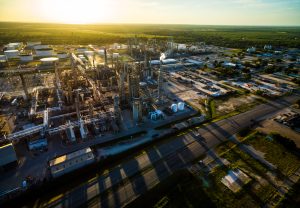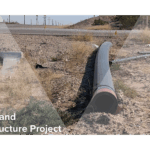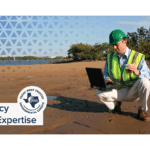
Phase 2 environmental site assessments are an essential tool in evaluating and managing potential environmental risks associated with a property. These assessments go beyond the initial Phase 1 assessment, which primarily focuses on identifying potential environmental liabilities. A Phase 2 assessment involves a more detailed investigation, including sampling, laboratory analysis, and data interpretation. In the Allen area, these assessments play a crucial role in environmental protection, ensuring that development projects are carried out responsibly and in compliance with local and national environmental laws.
Understanding the Importance of Phase 2 Environmental Site Assessments
Phase 2 environmental site assessments are essential in protecting human health and the environment. These assessments provide a comprehensive evaluation of a property’s current and historical usage and identify potential sources of contamination. By understanding the potential risks associated with a site, developers, property owners, and regulators can make informed decisions regarding land use and remediation measures. This ensures that proper precautions are taken to mitigate any environmental hazards and prevent further contamination.
The Role of Phase 2 Assessments in Environmental Protection
Phase 2 environmental site assessments play a crucial role in safeguarding the environment. By thoroughly investigating a site’s potential sources of contamination, these assessments help identify and mitigate risks to soil, groundwater, and air quality. They also assess the potential impact on nearby ecosystems and sensitive habitats. By addressing these risks early on, we can protect natural resources, preserve biodiversity, and maintain the well-being of local communities.
Key Components of a Phase 2 Environmental Site Assessment
A Phase 2 environmental site assessment typically includes several important components. These may include:
- Subsurface soil and groundwater sampling
- Monitoring well installation and groundwater monitoring
- Vapor intrusion assessment
- Indoor air quality testing
- Evaluation of potential contaminant pathways
- Data interpretation and risk assessment
During the assessment process, each component is carefully executed to ensure accurate and reliable results. This helps in identifying potential contamination sources, assessing the extent of contamination, and establishing the appropriate remediation measures.
Subsurface soil and groundwater sampling involves collecting samples from various depths to analyze the presence of contaminants. This process helps determine the vertical distribution of pollutants and their potential migration pathways. By understanding the movement of contaminants through soil and groundwater, experts can develop effective remediation strategies to prevent further spread and minimize the impact on surrounding areas.
Monitoring well installation and groundwater monitoring are crucial in assessing the quality and quantity of groundwater resources. Monitoring wells are strategically placed to measure water levels and collect samples for analysis. This data helps determine the extent of contamination and the potential risks to human health and the environment. By continuously monitoring groundwater quality, experts can track changes over time and take appropriate actions to protect this valuable resource.
Vapor intrusion assessment focuses on evaluating the potential for harmful vapors to migrate from contaminated soil or groundwater into buildings. This assessment helps identify potential risks to indoor air quality and the health of occupants. By understanding the pathways and factors influencing vapor intrusion, experts can implement measures to prevent exposure and ensure a safe living or working environment.
Indoor air quality testing is an essential component of phase 2 assessments, as it helps identify potential sources of contamination within buildings. By analyzing air samples, experts can determine the presence of volatile organic compounds (VOCs) or other harmful substances that may pose health risks. This information allows for the implementation of appropriate ventilation systems or remediation measures to ensure a healthy indoor environment.
Evaluation of potential contaminant pathways involves a thorough examination of the site’s geology, hydrogeology, and other factors that may influence the movement of contaminants. This assessment helps identify potential migration routes and areas of concern, guiding the development of effective remediation plans. By understanding the pathways, experts can implement measures to prevent further contamination and protect sensitive receptors such as nearby water bodies or ecological habitats.
Data interpretation and risk assessment are critical steps in the phase 2 assessment process. Experts analyze the collected data, taking into account site-specific conditions, regulatory standards, and potential exposure scenarios. By assessing the risks associated with the identified contaminants, experts can prioritize remediation efforts and develop strategies to protect human health and the environment effectively.
The Process of Conducting Allen Phase 2 Environmental Site Assessments
The process of conducting Allen Phase 2 environmental site assessments involves several key steps. These include:
Initial Site Inspection and Sampling
During the initial site inspection, environmental consultants conduct a visual assessment of the property. They identify potential sources of contamination, such as underground storage tanks, chemical storage areas, or industrial waste disposal sites. Soil and groundwater samples are then collected from various locations on the site to determine the presence and extent of contamination.
Laboratory Analysis and Data Interpretation
The collected samples are sent to accredited laboratories for comprehensive analysis. The laboratory tests help determine the types and concentrations of contaminants present on the site. Once the results are obtained, they are interpreted by environmental professionals who analyze the data to assess the potential risks and develop appropriate remediation strategies.
Regulatory Framework for Allen Phase 2 Environmental Site Assessments
Allen Phase 2 environmental site assessments are conducted in compliance with local and national environmental laws and regulations. These assessments help ensure that development projects meet the necessary regulatory requirements and that potential environmental risks are properly addressed.
Compliance with Local and National Environmental Laws
Environmental site assessments in Allen adhere to local regulations, such as zoning ordinances, land use restrictions, and other applicable laws. Additionally, they also comply with national regulations, including those set by the Environmental Protection Agency (EPA) and other federal agencies. Compliance with these regulations is essential for obtaining necessary permits and approvals for development projects.
Understanding the EPA’s Standards for Phase 2 Assessments
The EPA has established standards and guidelines for conducting Phase 2 environmental site assessments. These standards outline the key elements and procedures that should be followed to ensure the quality and reliability of the assessment results. By adhering to these standards, Allen Phase 2 assessments can provide accurate and consistent data for decision-making processes.
Potential Challenges and Solutions in Allen Phase 2 Environmental Site Assessments
Conducting Phase 2 environmental site assessments in Allen may come with certain challenges. However, with careful planning and implementation, these challenges can be overcome effectively.
Dealing with Contaminated Sites
One common challenge in Allen Phase 2 assessments is dealing with contaminated sites. Remediation of these sites can be complex and costly. However, with the help of environmental professionals and remediation experts, effective strategies can be implemented to clean up the contamination and restore the site to a safe and usable condition.
Mitigation Strategies for Identified Environmental Risks
During the assessment process, potential environmental risks may be identified. These risks could include groundwater contamination, soil pollution, or other hazards. To mitigate these risks, appropriate remediation strategies are developed and implemented. These strategies may involve soil excavation, groundwater treatment, or other measures to eliminate or minimize potential hazards.
The Future of Allen Phase 2 Environmental Site Assessments
The field of environmental site assessments is continually evolving, and the future of Allen Phase 2 assessments looks promising. Technological advancements play a significant role in enhancing the efficiency and effectiveness of these assessments.
Technological Advancements in Environmental Assessments
New technologies, such as remote sensing tools, advanced laboratory techniques, and data analytics, are being increasingly used in Phase 2 environmental site assessments. These advancements enable environmental professionals to gather more accurate and extensive data, improving the assessment process’s overall accuracy and reliability.
The Role of Phase 2 Assessments in Sustainable Development
With growing concerns about environmental sustainability, Phase 2 environmental site assessments will continue to play a critical role in achieving sustainable development goals. By identifying and addressing potential environmental risks, these assessments contribute to the responsible and sustainable use of land and resources, ensuring the long-term well-being of both the environment and communities in Allen.
In conclusion, Allen Phase 2 environmental site assessments are an essential component in managing and mitigating environmental risks associated with property development. Through careful investigation and analysis, these assessments help identify potential contamination sources, assess risks, and develop appropriate remediation strategies. Complying with local and national regulations and leveraging technological advancements further enhance the effectiveness and value of these assessments. As we move towards sustainable development, Phase 2 assessments will continue to play a pivotal role in ensuring a safe and healthy environment for current and future generations in Allen.
If you’re ready to ensure your property development in Allen meets environmental compliance and contributes to sustainable growth, ESE Partners is here to guide you through the complexities of Phase 2 Environmental Site Assessments. Our team of dedicated environmental engineers and scientists are equipped to provide thorough assessments, innovative solutions, and sustainable strategies tailored to your unique needs. Don’t let environmental risks derail your project. Request A Proposal today and partner with us to responsibly move your business forward while enhancing the community’s quality of life.








